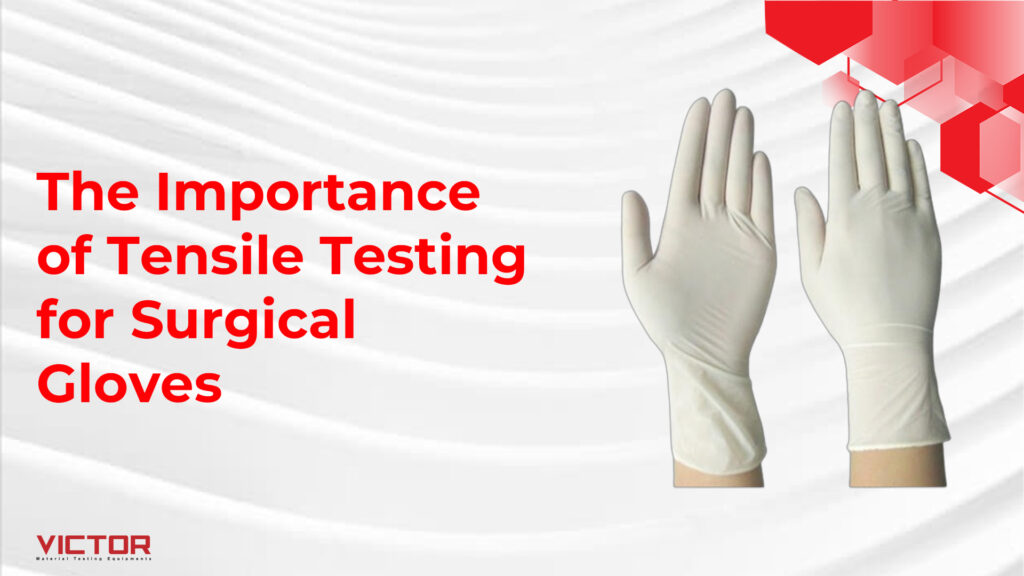Surgical gloves are essential in ensuring hygiene and safety during medical procedures. Their material strength and stretchability are crucial for protecting healthcare workers and patients. Tensile testing, particularly according to the ASTM D412 standard, helps determine the performance of surgical gloves under stress.
What is ASTM D412?
ASTM D412 is a widely recognized testing standard for assessing the tensile properties of rubber and thermoplastic elastomers, including surgical gloves. The standard evaluates tensile strength, yield point, and ultimate elongation, ensuring that gloves meet the safety and performance requirements for medical use.
Tensile Testing Methodology for Surgical Gloves
Surgical gloves undergo tensile testing through a specific process:
- Sample Preparation:
A die is cut from the glove material into a dumbbell shape. - Gripping the Sample:
The test sample is securely placed on the grips of a tensile testing machine. - Running the Test:
The sample is stretched until it breaks, with tensile strength and elongation recorded.
Additionally, the gloves undergo accelerated aging tests to simulate wear and tear over time. This ensures that gloves will maintain their integrity even near the end of their shelf life.
Why Tensile Strength Matters for Surgical Gloves
Tensile strength is an important factor, but it should be balanced with flexibility and comfort:
- Tensile Strength:
High tensile strength means the glove can withstand more force without breaking. However, excessive tensile strength can make the gloves stiff and uncomfortable. - Elongation:
The ability of the gloves to stretch without tearing is vital for comfort and function. Good elongation prevents failure during procedures, ensuring better protection and a snug fit.
Conclusion: Why Tensile Testing Is Essential
Tensile testing verifies that surgical gloves meet the necessary strength and durability standards. By adhering to ASTM D412, manufacturers can ensure that gloves will perform reliably without compromising comfort. Properly tested gloves protect healthcare workers and patients during medical procedures, maintaining safety and hygiene.

